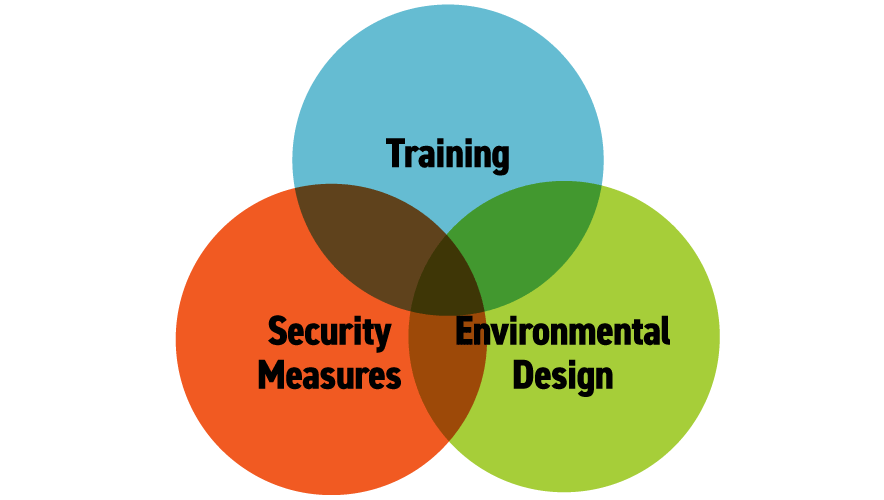The Need for a Multidimensional Active Shooter Response
While a wealth of research supports the success of one-dimensional strategies for responding to active shooter incidents, this approach isn’t entirely effective for preventing these events and minimizing loss. After assessing one-dimensional strategies, it's time to review multidimensional active shooter responses.
The complexity and high-risk scale of active shooter situations warrant a multidimensional response that can be applied across locations universally. There is also theoretical support for this.
The general system theory (GST) serves as a framework that can be used to understand complex systems. It is based on the idea that every system is made up of interacting parts and that these parts must be in balance for the system to function properly. Regarding active shooter responses, traditional science can’t provide answers to all questions because the issue in question is too narrow. It is critical, therefore, to explore the surrounding issues to gain an in-depth understanding of an active assailant situation. The GST can be used to understand the different factors that contribute to these situations.
For example, a single shooter may be motivated by a variety of factors, such as mental illness, personal grievances, or radical ideology. Similarly, there are multiple pathways that can lead to an active shooter situation, such as easy access to firearms, a history of violence, or exposure to extremist content.
A multidimensional approach to active shooter response takes the complex nature of these situations into account. By understanding the different factors that contribute to active shooter incidents, security professionals can develop more comprehensive and effective strategies for prevention and response.
Another theory that supports the demand for a multidimensional active shooter response is the theory of concentric protection. This theory is based on the idea that multiple layers of security measures provide the most effective and comprehensive protection for high-value assets or structures. The theory of concentric protection emphasizes the need to focus on using training, security measures, and environmental design to create redundant layers of protection so that when one feature fails to stop an attack, another feature will create a barrier for an assailant.

For example, a fence (first layer) can be bypassed by jumping, but a monitored security camera or motion-sensing lights would provide notice of the breach (second layer). This would enable notification to security (third layer) to respond, as well as provide an opportunity for those inside to take appropriate action based on their training or organization policy (fourth layer).
The theory of concentric protection is an integral principle in the security industry, but it is often disregarded when devising security management strategies to mitigate the risks of active shooter situations. Many fail to understand the concept of layering protective measures and only consider training as the solution to active shooter prevention. Additionally, the emotional impact that is inherent to active shooter incidents frequently results in searching for fast solutions with little consideration to all available options.
A multidimensional approach can be particularly effective in the face of an active assailant incident—for example, an organization can use physical barriers to block a shooter’s path while working to evacuate people from the area and provide medical assistance to those who have been injured.
While a single-dimensional approach might be adequate in some situations, a multidimensional approach can provide a greater level of protection. Using multiple strategies can significantly increase the chances of success and potentially save more lives.
Both of these theories contend that the aggregate is more effective than individual parts. An in-depth analysis of active shooting case studies also suggests that the failures of one response strategy could be made up for if redundant measures are present.
Continue ReadingHow to Put Multidimensional Active Shooter Response into Practice Many organizations still don’t have an active shooter response plan in place, and even fewer have trained their employees on what to do. This is a huge mistake. |
Gene Petrino is cofounder of Survival Response LLC. He is a decorated law enforcement officer, former SWAT commander, and educator. For nearly 30 years, he has gained in-depth expertise in tactical command, security threat analysis, and active shooter instruction.

